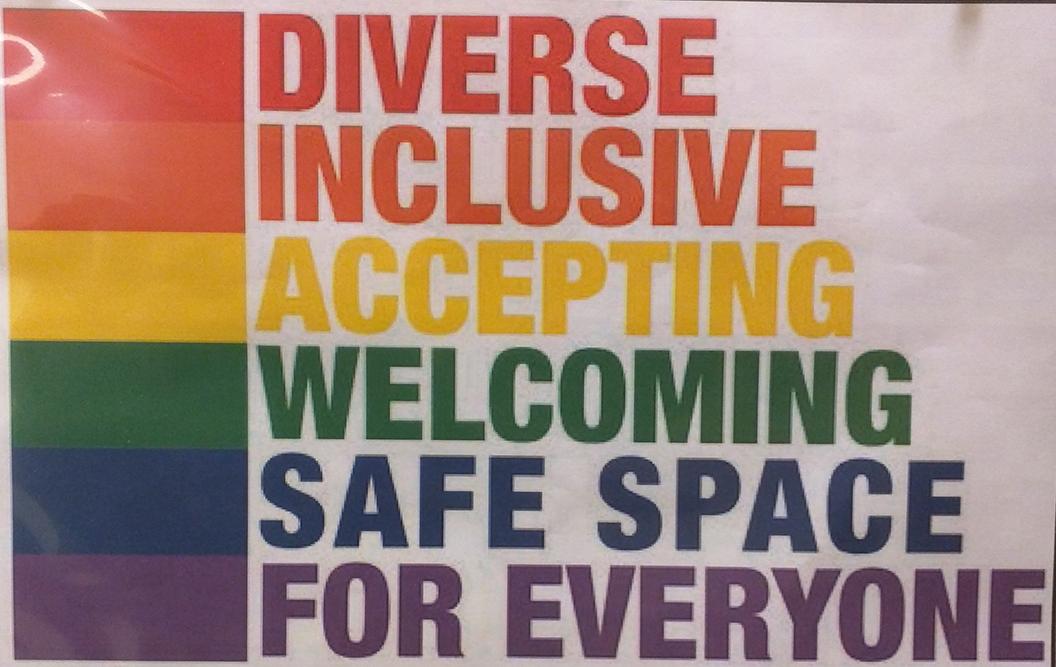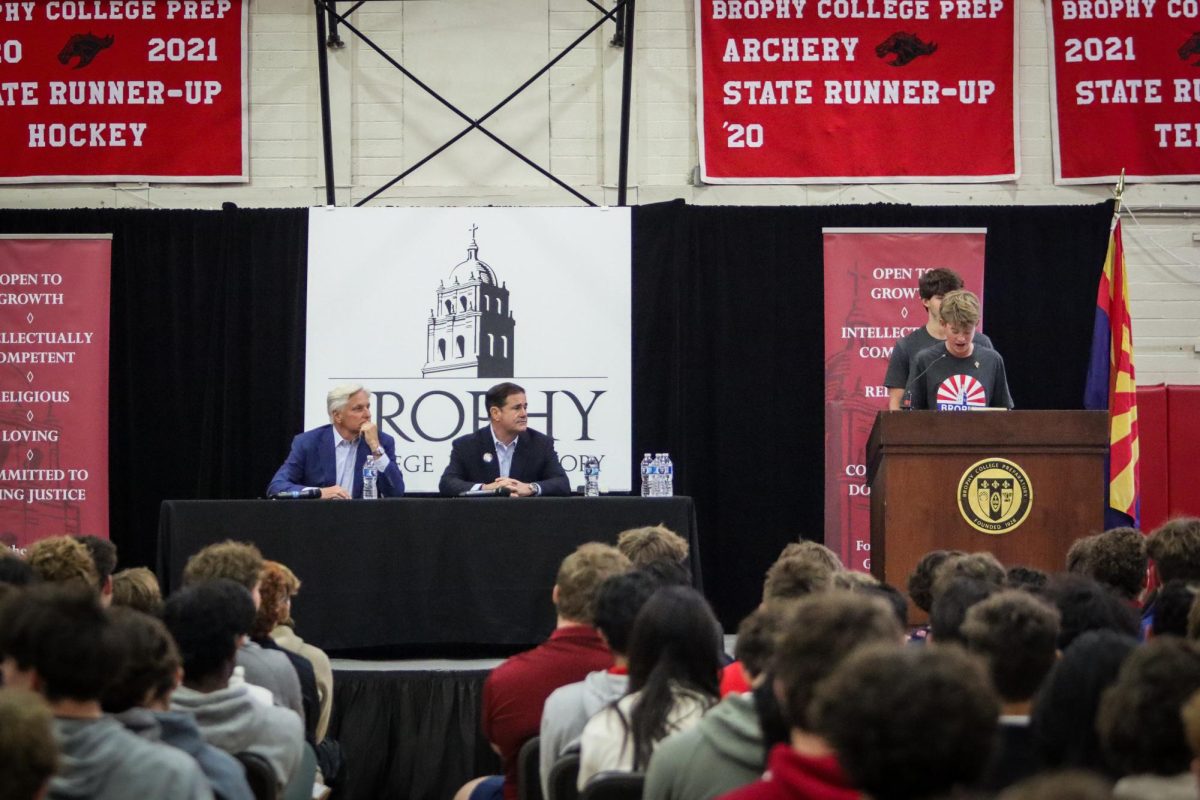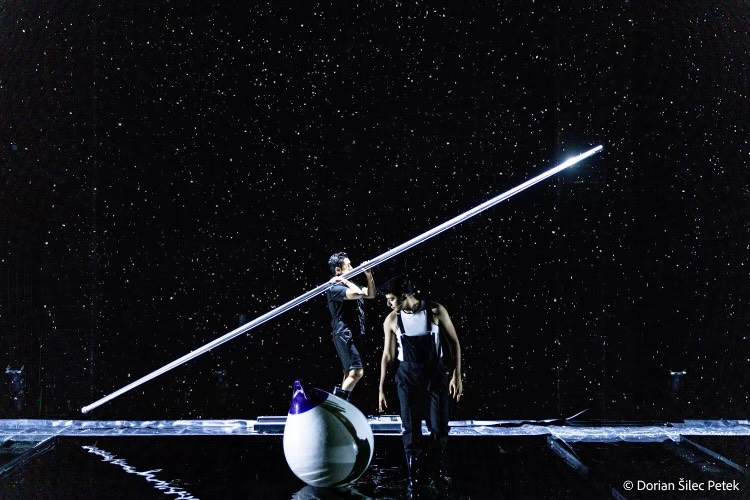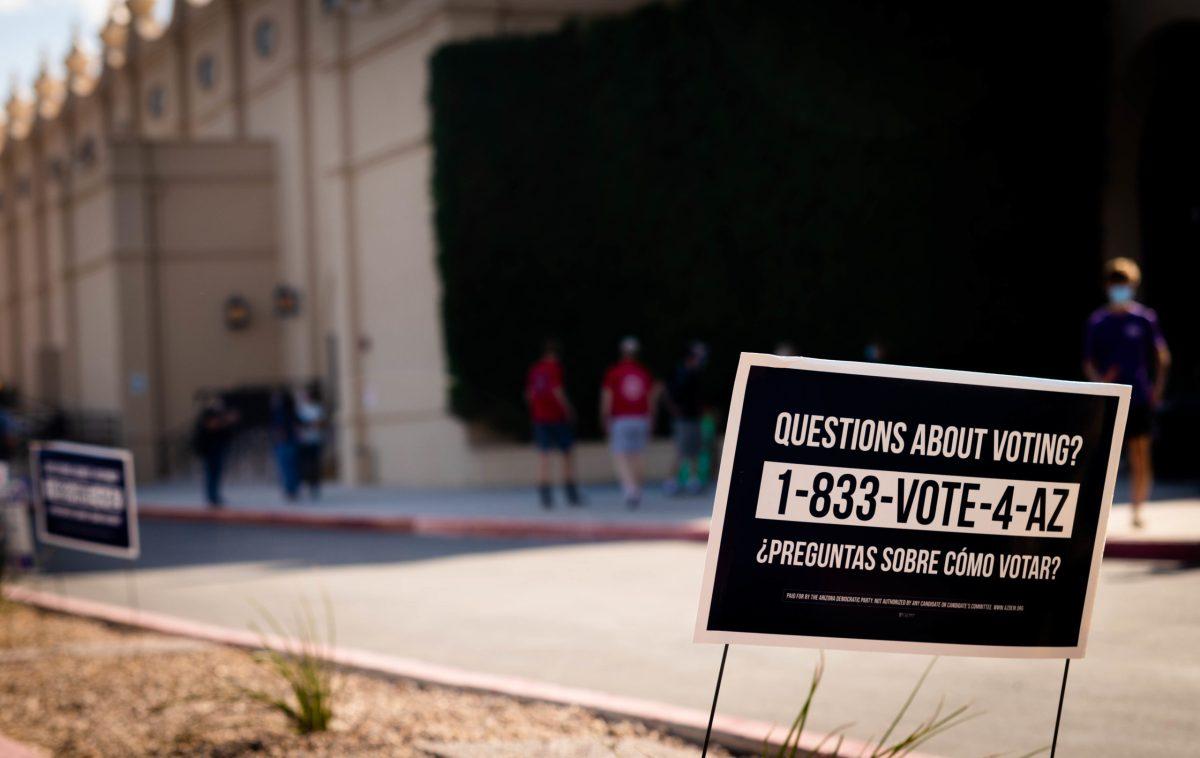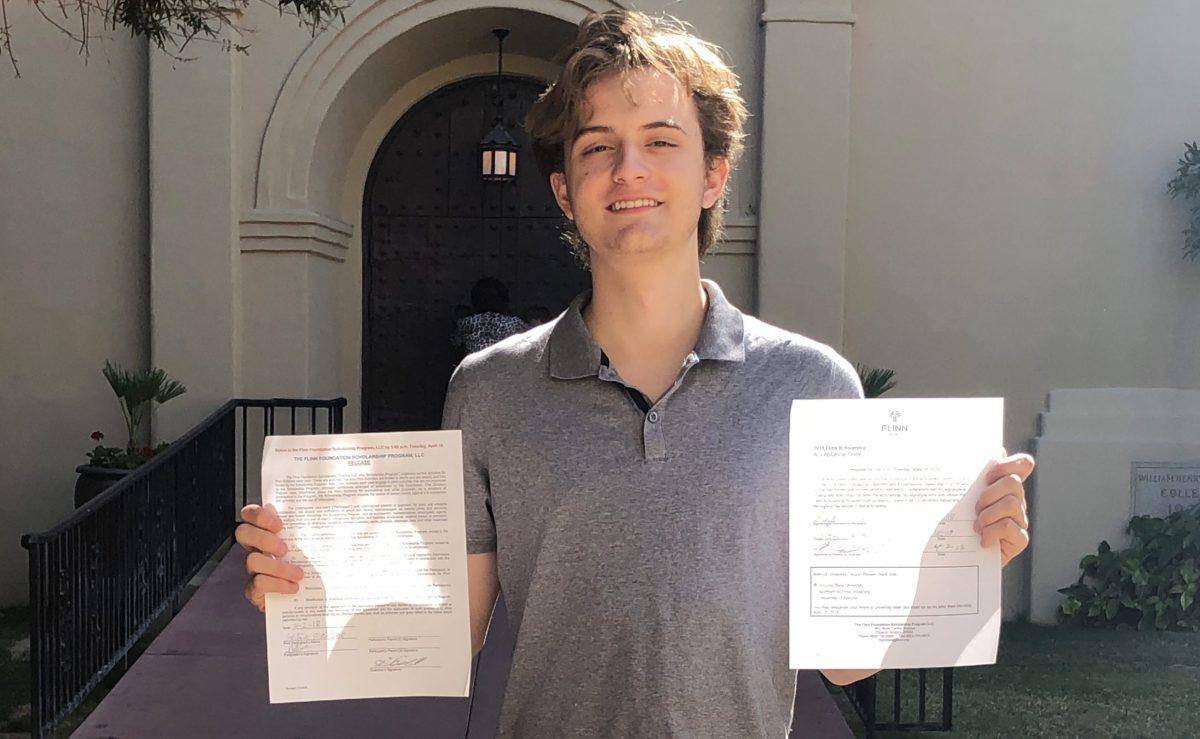Photo by Bryce Owen ’17 | Safe Space signs are displayed across many classrooms and offices across campus. Faculty are placing the sign in an effort to deter harmful comments towards students.
By Graham Armknecht ‘18
THE ROUNDUP
New signs reading, “Diverse, Inclusive, Accepting, Welcoming, Safe space for everyone” started to appear around campus and in classrooms after this year’s election.
“A student asked me if I wanted one, and I said yes,” said Ms. Kelly Guffey, who was one of the first to put the sign in her classroom. “As a government teacher, we spent the entire first semester talking about the election.”
“I always try to make my classroom a safe space from a political perspective, but I certainly wanted to let all students know in a more visual way that everyone, and their opinions, are accepted here,” she said.
Nico Pacioni ’18 said he thinks these safe spaces aren’t actually safe.
“I think that [the signs] are an overreaction on the part of teachers,” Pacioni said. “Brophy is a safe space; we are inclusive and we are all brothers.”
Caesar Lopez ’18, one of the creators of the signs, said the signs don’t imply that the school isn’t physically unsafe.
“Not everyone feels safe–not that their life is in danger–but as they don’t feel as welcome,” Lopez said. “I’ve always felt safe on campus, but freshman year I was uncomfortable. I was worried about how people would treat me and talk to me because I am gay.”
Pacioni said he is concerned that safe spaces don’t actually solve problems.
“If there’s an idea that’s a problem, you shouldn’t solve it by censoring it. We should have to discredit it. If you have a hole in a pipe, you don’t tape the pipe. You replace it,” Pacioni said.
EL Gaylord ’18 echoed that sentiment saying that safe spaces have evolved from their original intent.
“[Safe spaces originally] were to shield people from racism and discrimination, but since have evolved into a way to shield people from criticism,” Gaylord said. “We need to stop coddling people and promote an intellectual dialogue.”
“If we want to move our ideas forward, we are not going to have more heated debate in safe spaces. I don’t believe high school or education should have safe spaces. There’s nothing wrong with strong opinions on either side, it’s just when you censor the other side you’re going to get problems,” he said.
Ms. Breanne Toshner, who has a sign on her door, said that is not how she sees a designated safe space.
“I haven’t heard the perspective that safe spaces hinder freedom of speech,” Ms. Toshner said. “The sign literally said diversive, inclusive, welcoming safe space for everyone. That to me inspires heated, but respectful debate.”
“If someone is having an issue, I want them to always know that my door is open period,” she said. “All the signs do is add more open doors. And if I can have one student who needs a person to trust, or one person to listen to them, if I can do that for even one person, that’s a great thing,” she said.
Mr. Gil Martinez said how counseling plays a role in being a safe space, even before the signs went up.
“Being in counseling, we are privileged to be brought into the lives of a lot of guys,” Mr. Martinez said. “Usually, we are involved more in academics, but other times it’s guys who are having issues with sexual identity, racial issues, and family issues.”
“I always tell my guys when they come in, they should consider my office a safe space where they can share what’s bothering them without it being broadcasted to anyone else. It helps guys open up a bit more and it lets them know that someone is willing to listen to them,” he said.
The two students who created the signs, Carter Clelland ’17 and Lopez, said they have been in the process of getting these approved for about two years.
“We’ve been trying to get the safe space signs approved for about the last year, and it just got approved,” Clelland said. “Now that it’s approved, we want to let students know they can talk to teachers, no matter the problem they are having.
“I got the idea because I talked to a teacher and she helped me through circumstances,” he said.“I think it would be great to just know which people would be able to take things.
When asked about the timing, Clelland said that how it lined up with the election was a coincidence.
“It just happened they got approved the same week as the election,” he said. “Neither of us had time to put the signs up until then. However, regardless of whether it’s election or not it’s a great thing to have to make students welcome.“
Lopez said there is a target audience for the signs, but anyone can use them.
“[Carter and I] were aiming for the LGBTQ community because of the rainbows,” he said.“Some students thought [the signs] aren’t needed because they think Brophy is all ready a safe space. However, it’s really helpful for people who are gay, Hispanic, undocumented, etc. I feel like some people don’t understand that.”















